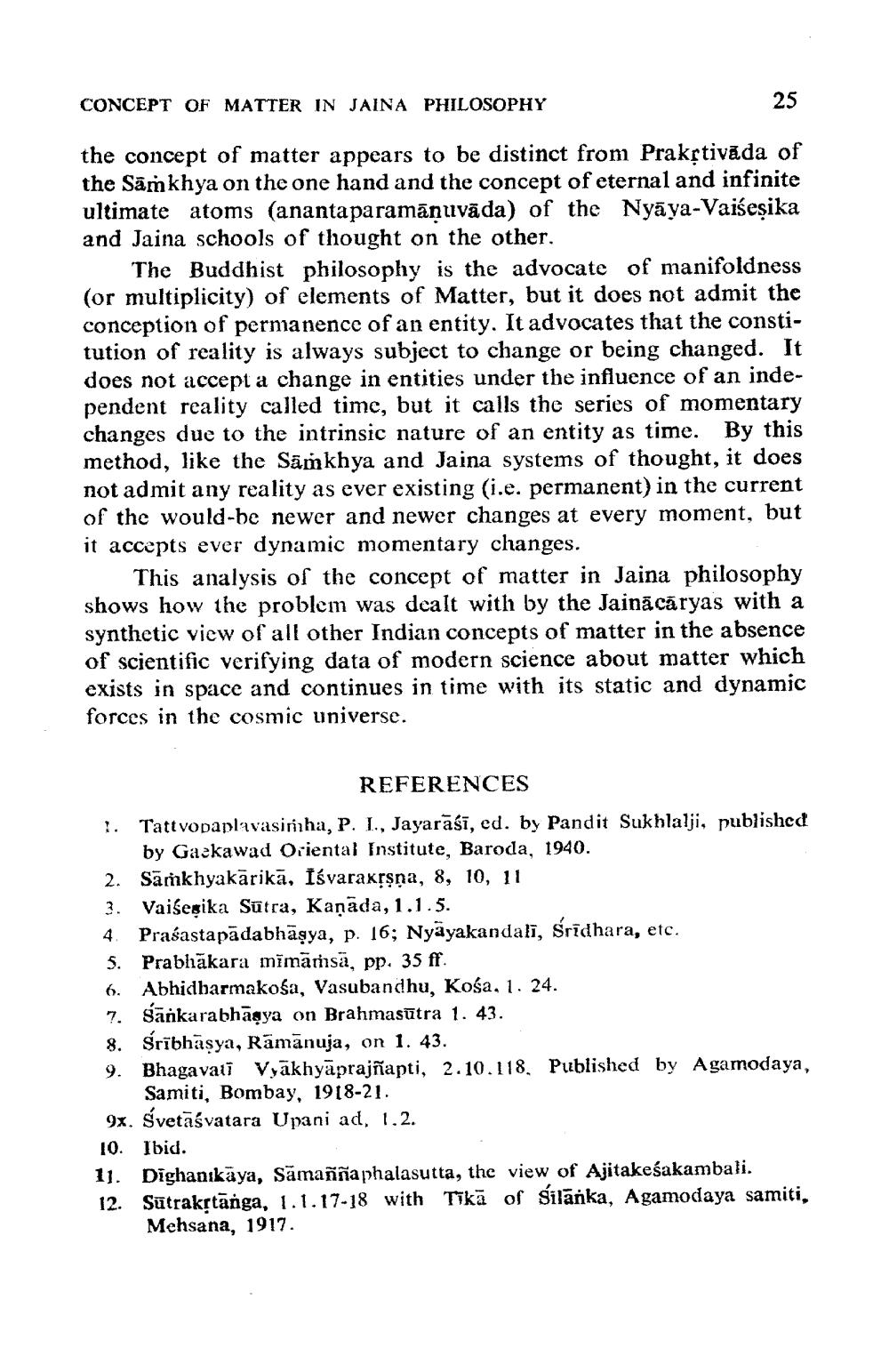________________
CONCEPT OF MATTER IN JAINA PHILOSOPHY
25
the concept of matter appears to be distinct from Prakrtivāda of the Samkhya on the one hand and the concept of eternal and infinite ultimate atoms (anantaparamānuvāda) of the Nyāya-Vaiseșika and Jaina schools of thought on the other.
The Buddhist philosophy is the advocate of manifoldness (or multiplicity) of elements of Matter, but it does not admit the conception of permanence of an entity. It advocates that the constitution of reality is always subject to change or being changed. It does not accept a change in entities under the influence of an independent reality called time, but it calls the series of momentary changes due to the intrinsic nature of an entity as time. By this method, like the Samkhya and Jaina systems of thought, it does not admit any reality as ever existing (i.e. permanent) in the current of the would-be newer and newer changes at every moment, but it accepts ever dynamic momentary changes.
This analysis of the concept of matter in Jaina philosophy shows how the problem was dealt with by the Jainācāryas with a synthetic view of all other Indian concepts of matter in the absence of scientific verifying data of modern science about matter which exists in space and continues in time with its static and dynamic forces in the cosmic universe.
REFERENCES 1. Tattvopaplavasinha, P. I., Jayarasi, ed. by Pandit Sukhlalji, published
by Gaekawad Oriental Institute, Baroda, 1940. 2. Samkhyakārikā, Iśvarakrsna, 8, 10, 11 3. Vai esika Sūtra, Kanāda, 1.1.5. 4. Prasastapādabhāạya, p. 16; Nyäyakandalī, śrīdhara, etc. 5. Prabhākara mīmārsä, pp. 35 ff. 6. Abhidharmakośa, Vasubandhu, Kośa, 1. 24. 7. Sankarabhāgya on Brahmasūtra 1. 43. 8. Srībhāsya, Rāmānuja, on 1. 43. 9. Bhagavati Vyakhyāprajñapti, 2.10.118. Published by Agamodaya,
Samiti, Bombay, 1918-21. 9x. Svetāśvatara Upani ad, 1.2. 10. Ibid. 11. Dighanıkäya, Samaññaphalasutta, the view of Ajitakeśakambali. 12. Sutrakrtānga, 1.1.17-18 with Tikā of Silānka, Agamodaya samiti.
Mehsana, 1917.




